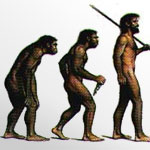A few times each month, I will post some random hair-related information, which I’m calling “tidbits”. I spend hours each day writing responses to questions I receive on this blog, so it is a nice change of pace. For example…

Some mammals require thick fur to keep themselves water proof and they have much higher fur density than humans have with hairs on their heads. For example, the Australian platypus has an incredible 700+ hairs per square mm which is 350 times as dense as the average human hair (2 hairs per square mm). The Merino sheep with its 5 micron thick wool is amazingly dense as well but not in the same league as those aquatic mammals who require waterproofing.
Some of the animals have two types of fur; the guard hairs are the long glossy hairs that overlay the shorter, denser under-fur. The guard hairs help to repel moisture in addition to protecting the under fur from damage which keep the animal warm in cold frigid waters.
Occasionally, a person comes into my office with their pet poodle, for example, and I joke with them about volunteering the dog’s fur for the transplant. This does not always go over well. Perhaps we can do some strip harvesting from the Australian platypus and get enough fur to cover a half dozen bald men.

